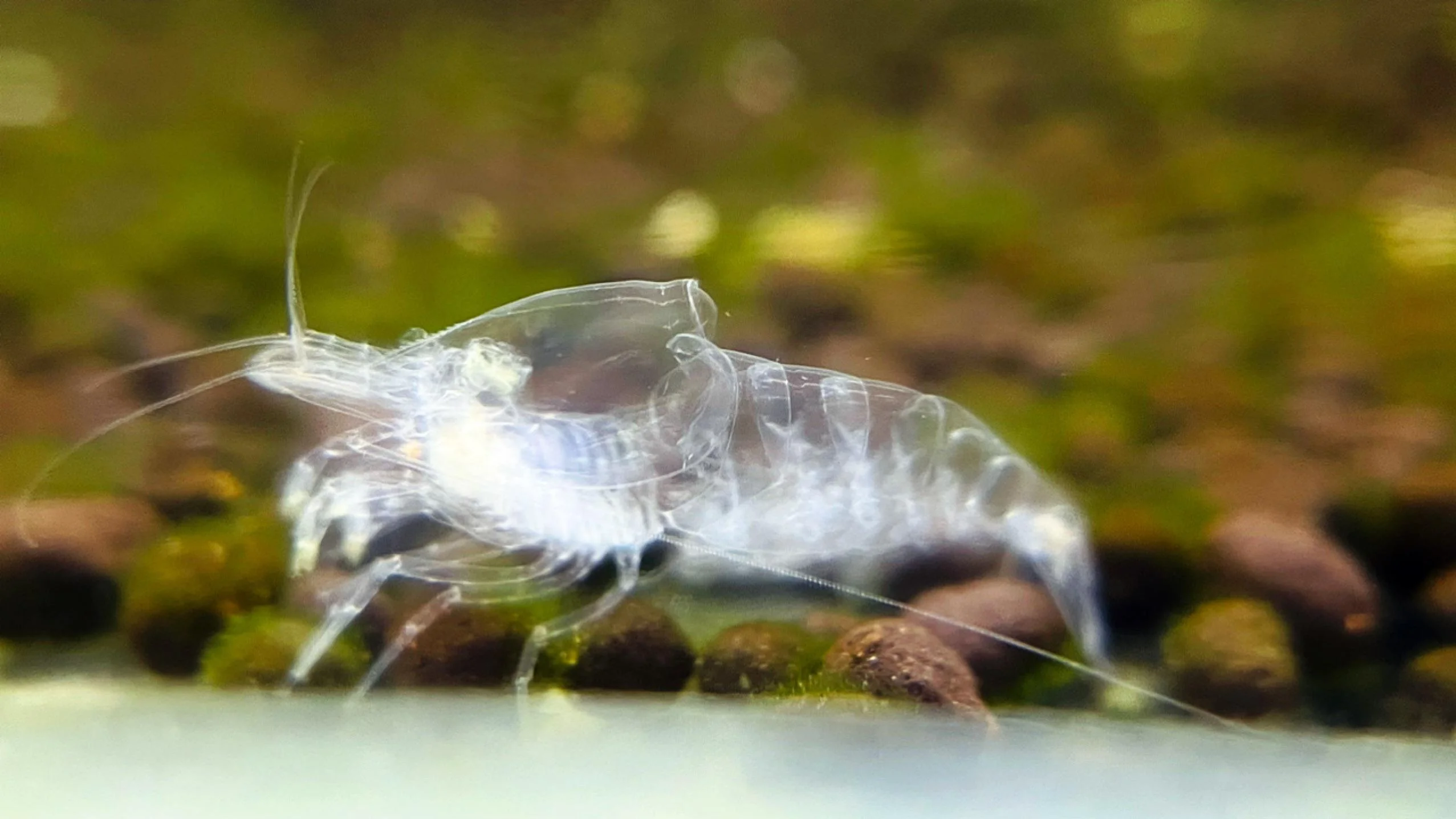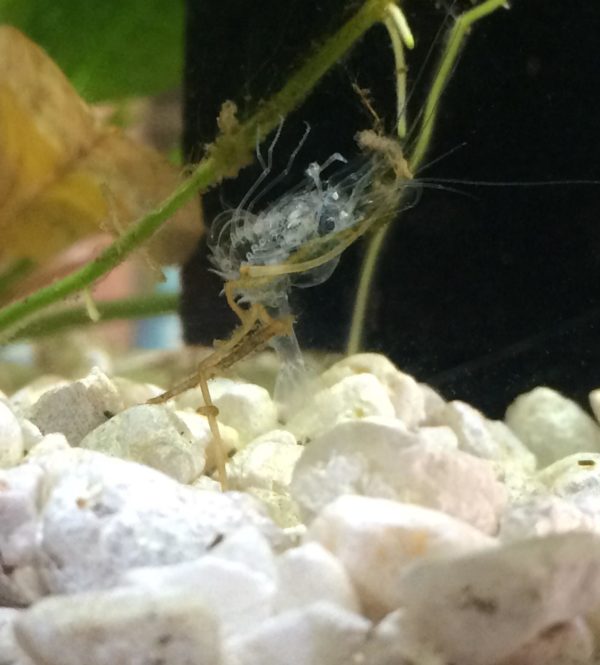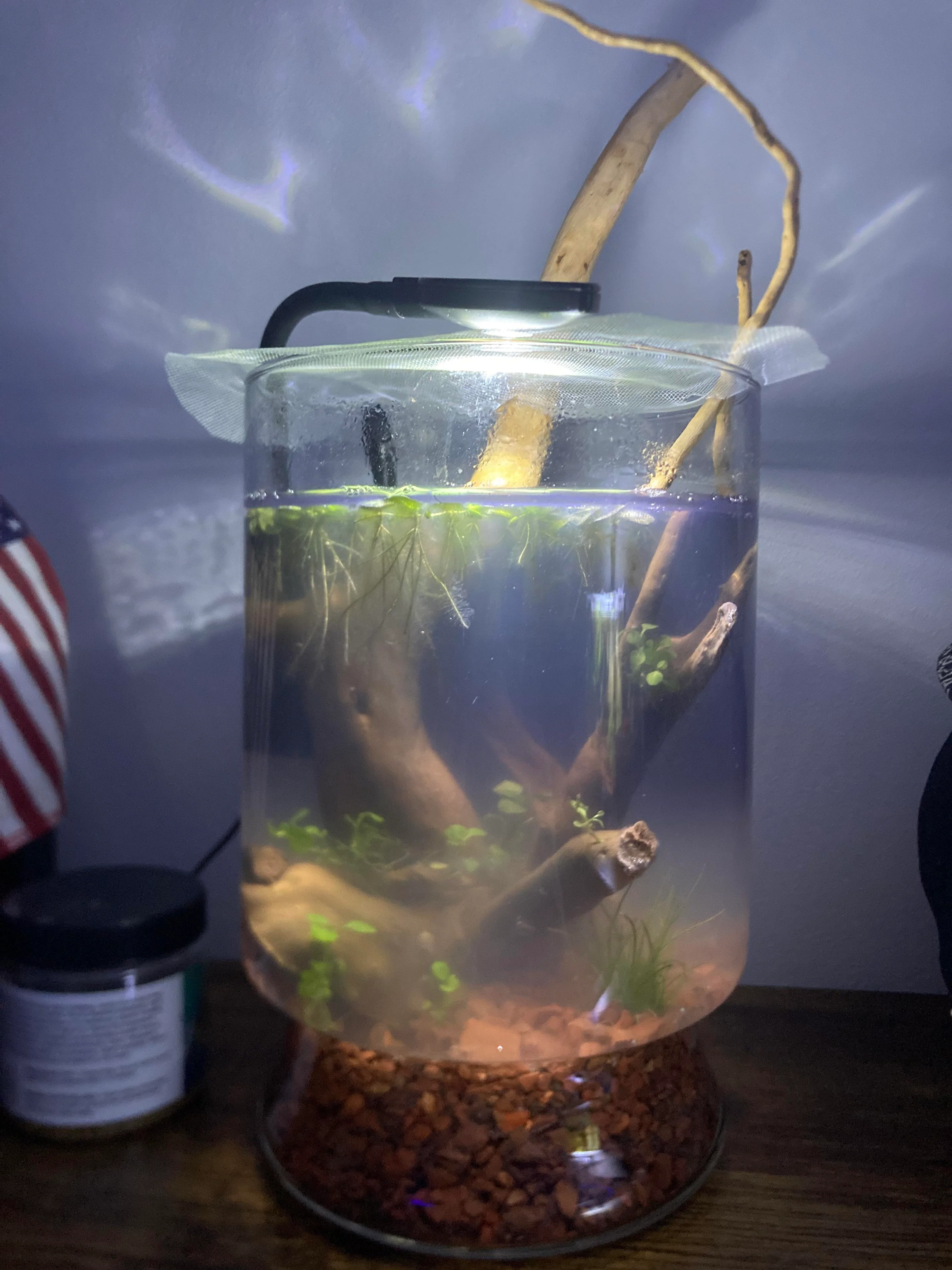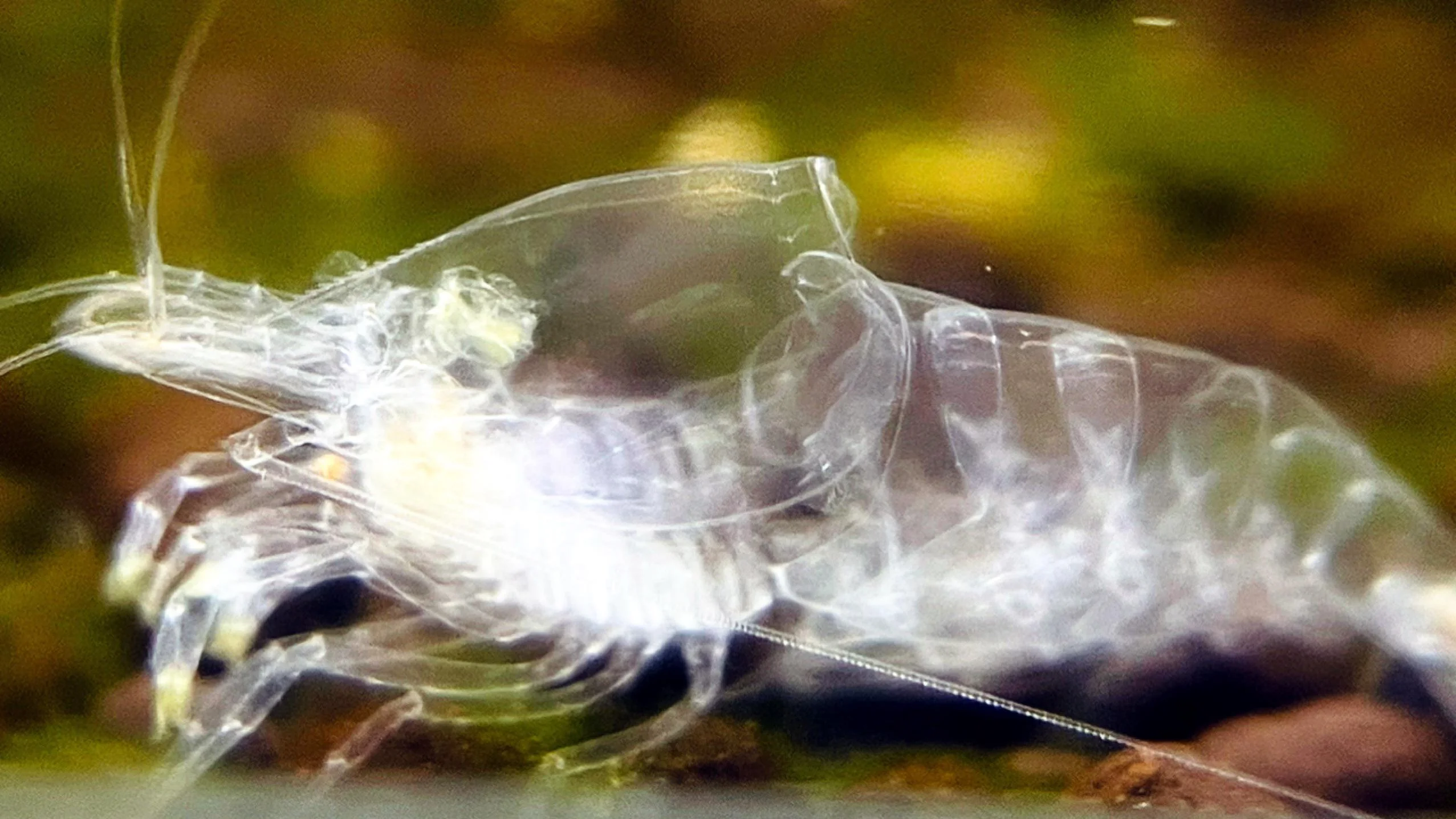Ghost shrimp, sometimes known as glass shrimp, is a widespread shrimp species among fish enthusiasts. Ghost shrimp are tiny shrimp that are translucent in color. What matters is that you comprehend the molting process, no matter what kind of shrimp you have. Now the question is: How often do ghost shrimp molt?
A strange and perplexing process may have occurred in your ghost shrimp aquarium or in a community tank where ghost shrimp is present: ghost shrimp molting. You are not alone if you haven’t observed ghost shrimp molting before. Beginner shrimp keepers who are just starting this hobby experience great worry as their ghost shrimps go through their molting cycle.
Ghost shrimps will molt as they mature since it is an entirely natural part of the development process. If they are not losing, this is a cause for worry since it is harmful to the ghost shrimp if they do not do so. The absence of molting implies that the plants encounter challenges and are not developing appropriately.
Increasing their shed frequency shows that they are in excellent condition and are growing optimally. An adult shrimp will molt every 3 to 4 weeks in ideal conditions. However, younger shrimp will lose more often due to the quickness they grow, perhaps every 1 or 2 weeks, if maintained under perfect conditions.
Molting is when a shrimp loses its closely fitting exoskeleton to begin constructing a new, more giant exoskeleton in which to live.
Table of Contents
How Often Do Ghost Shrimp Molt?
There is a one-year limit for the ghost shrimp, which is relatively short. They enjoy the rapid expansion throughout the year, and the molting or shedding may occur many times.

In part, the ghost shrimp molts more quickly than any other shrimp species because the juvenile shrimp grows continuously.
According to its lifestyle, a healthy adult shrimp will molt, or shed, its exoskeleton every 3 to 4 weeks, depending on how active they are. However, this is not always the case with shrimps that are still in their infancy. To keep up with their rapid growth, young shrimps will often lose, or molt more than their older counterparts do. Once every 1 to 2 weeks, it’s probable that it may happen again.
How much care you give your ghost shrimp will affect how soon it molts, and how quickly it sheds is determined by how much care you give it. It might take a few weeks, or it could take many months or even years. According to experts, ghost shrimps will continue to molt until they die since it is a vital component of their growth process.
How To Know When a Ghost Shrimp Is Molting?
You know how often ghost shrimp molt, but how to know when a ghost shrimp is molting? When ghost shrimps are ready to molt, you may tell by monitoring a few tiny changes in their behavior and appearance that they will lose.
During their molting process, they will exhibit a few telltale signs that they are going to molt, which will suggest that they are ready to do so. If you pay attention, you’ll note that they’re spending a lot of time standing still in the tank, which is a standard indicator of stress.
For the most part, shrimps will stay stationary for a considerable period, often for an hour or more. Occasionally, shrimps may seek to camouflage themselves under plants and ghost shrimp turning white to avoid detection.
Their sensitive skin is exposed during molting, leaving them more vulnerable to predation by predators. Consequently, the ghost shrimps will stay concealed for a few days until a new hypodermis form around them to shield them from predators. If your ghost shrimp suddenly vanishes from the tank, don’t be frightened since they will resurface in the tank 4 to 5 days after hiding in their hiding spots.
The shrimps may or may not consume any food. Even while they remain still, the antennae on their heads will slowly move.
If many ghost shrimps behave in this way, it is conceivable that a problem with the water parameters has occurred, which you should analyze, and repair as needed.
How Long Does It Take Ghost Shrimp to Molt?
In the case of the ghost shrimp, the molting process is relatively short, taking no more than 10 – 15 minutes.

Usually, ghost shrimp molt before mating, but this year they didn’t because female shrimp have fragile and flexible cuticles at this time of year.
Ghost shrimps molt daily during the larval stage; during the post-larvae phase, the shrimps lose every 3-4 days and grow by up to 20 percent. They shed every 4-10 days and increase to a maximum of 7 percent in size during the juvenile stage. On the other hand, adult shrimps molt around once a month to regrow their lost limbs.
What Happens If Molting Doesn’t Occur or Is Disrupted?
The act of molting is significant in the life of a ghost shrimp because it allows the shrimp to reproduce. The failure to molt implies that the shrimp is encountering difficulties detrimental to its overall health. In this case, they are more likely to get diseases and succumb to stress.
Molting must occur for your ghost shrimp to survive, and it must not be disturbed. Having your ghost shrimp shed its skin means that it is in good condition and is prospering in its environment. The ghost shrimp loses its exoskeleton and produces a new one to replace it when the conditions are right.
If the old skeleton is not being replaced with a new one as it should be, the tank is malfunctioning. The development of a white ring of death on your shrimp in the case of an unsuccessful molting effort will eventually end in the ghost shrimp’s death.
The process of ghost shrimp molting is crucial for the life of your shrimp, but a multitude of causes may disrupt it. The following are the significant elements that are causing disruption:
The Poor Water Quality
When it comes to unsuccessful molting, the most prevalent reason is a lack of proper water conditions. Failure to molt will occur if the water conditions for your ghost shrimps are not at their optimum levels. The most prevalent reason for unsuccessful molting is insufficient water quality in the pond. When it comes to molting, ghost shrimp need exact water conditions to finish their procedure correctly.

Changing The Water Regularly
If your shrimp is used to and absorbs rough water, but you suddenly switch to softer water, it is osmotic shock, and it may be pretty harmful. It is also conceivable that repeated water changes may cause the normal molting process to be slowed or stopped. Ghost shrimp draw water from the tank during molting, generating cracks and enlargements in the shrimp shells.
An Inappropriate Diet
An inadequate diet may also be a contributing cause to failed molting attempts. Many shrimp owners feel that since the ghost shrimp shell is composed chiefly of calcium and protein, it is the best nourishment for their shrimp throughout spawning and hatching.
Besides shrimp-specific meals and blanched vegetables, algal wafers and biofilm are other elements you may add to their diet. In addition to being an excellent source of nourishment for your ghost shrimps, snowflakes are also a rich amount of protein.
Tank Companions Who Are Not Acceptable
If possible, avoid keeping your ghost shrimps with fish that have large enough mouths to fit your 1.5 inches ghost shrimp, such as the following: jack Dempsey, discus, convict, angelfish, and any other fish with a large enough mouth to handle your 1.5 inches ghost shrimp.
The ghost shrimp is a tiny invertebrate that lives in the sand and is gentle and harmless. They are naturally fearful and nocturnal and being around the wrong criminals may give them considerable anxiety and discomfort.
Can Shrimp Die from Molting?
When shrimp are lacking in the critical components of their parameters, they are unable to form and shed healthy exoskeletons. The “white ring of death,” which appears as a solid white band around the area where the head and body meet, may be detected early.

If you change the water too quickly, you risk causing the shrimp to molt prematurely, making them more vulnerable and maybe resulting in the death of your shrimp.
Care Tips During Ghost Shrimp Molting
- To avoid being detected, make sure they have lots of hiding places. You may use anything you wish, like rocks, fake flora, driftwood, cavern decorations, etc.
- It is vital to have a proper tank setup and environment to keep ghost shrimp healthy, which is essential for the molting and breeding cycle.
- In their natural habitat, ghost shrimp do not need the usage of a specific substrate. Aquarium substrates such as gravel, sand, or a planted aquarium substrate will perform nicely.
- Remove the exoskeleton from the tank as soon as you see it has separated from the shrimp’s body and store it in a separate container after the shrimp have completed molting.
- If you want your ghost shrimps to be healthy and have easy molting, make sure the water is free of ammonia and nitrite.
Wrapping Up
Ghost shrimps are unusual and exciting creatures, and now you know how often ghost shrimp molt. Ghost shrimp must go through a gradual molting process to live and stay healthy if you’ve ever seen a ghost shrimp molt. Consequently, there’s no need to be scared or alarmed if you see some of your ghost shrimp moltings.
